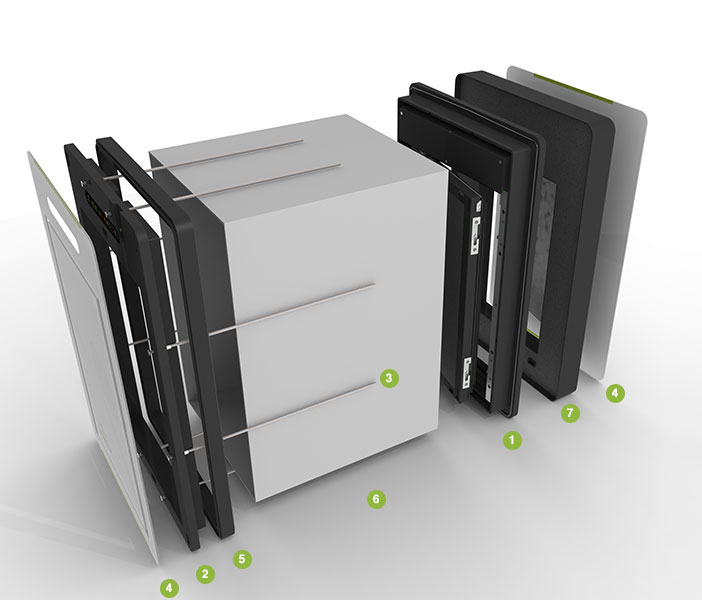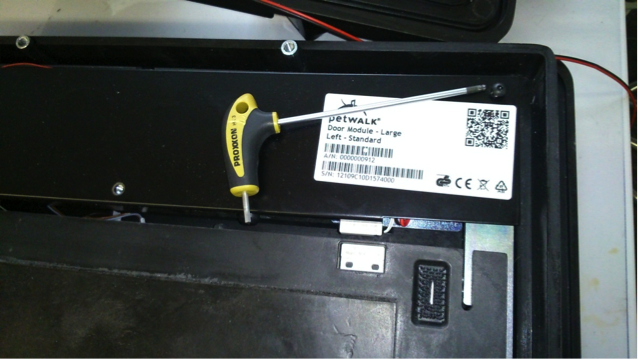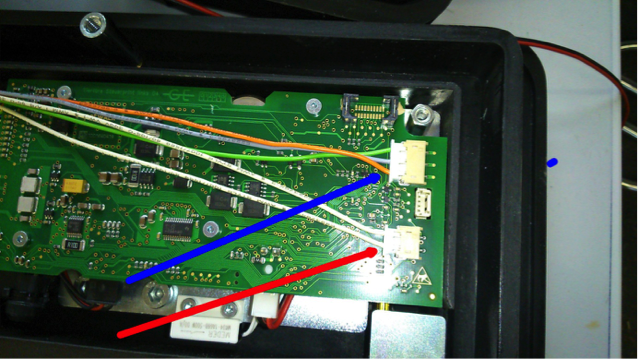Modular, flexible, individual.
petWALK Tiertüren sind nicht nur die weltweit ersten professionellen Haustüren, die speziell für Haustiere konzipiert wurden, sondern sie können auch flexibel Ihren persönlichen Bedürfnissen und baulichen Gegebenheiten angepasst werden.

Türmodul
Das petWALK Türmodul ist das Herz Ihrer persönlichen Tiereingangslösung und beinhaltet bereits den gesamten Funktionsumfang. Erhältlich ist es in zwei unterschiedlichen Größen, mit unterschiedlich angeschlagenem Türblatt und für alle denkbaren Einbausituationen.
Die Konstruktion basiert auf zwei Rahmen - dem Außenrahmen 1 (auch „Außenflansch“ genannt) und dem Innenrahmen 2 („Innenflansch“) - die mittels Gewindestangen 3 an einen Bauteil, der eine geeignet große Öffnung besitzt, aneinander und damit auch an das Bauteil gepresst werden. Am Außenflansch sind Motoren, das automatisch bewegte Türblatt, Schließmechanismen, Beschläge und Elektronik angebracht. Der Innenflansch enthält ein Display, die Display- Elektronik und die Empfangseinheit für die Fernbedienung.
Hier finden Sie mehr Informationen.
Gestaltungselemente
An der jeweiligen Außenseite können noch Dekorplatten 4 (zum Beispiel aus Acryl oder HPL- Material) angebracht werden.
Erweiterungen
Wenn der eingespannte Bauteil sehr schmal ist (< 5 cm), wird ein sog. Spacer 5 benötigt, um den für das Einspannen notwendigen Abstand herzustellen. Wird hingegen ein großer Abstand überbrückt, wie zum Beispiel beim Verbauen in eine breite Wand, verbindet ein geeigneter Tunnel 6 den Außen- mit dem Innenrahmen.
Werden sehr hohe Dämmwerte gewünscht, kann an dem Außenrahmen noch eine zusätzliche Dämmebene 7 angebracht oder dieser beim Einbau ins Mauerwerk von der Mauerdämmung überdämmt werden.



